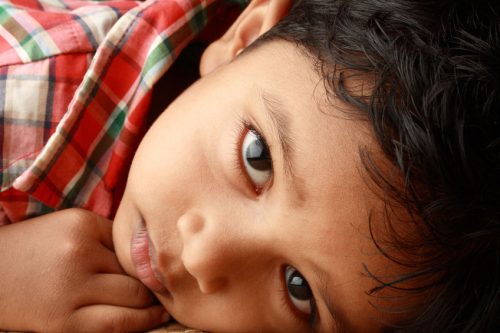How to Protect Your Children from Child Abuse: A Parent’s Guide
Visible marks on the body are not the only signs that tell that child is abused. Disregarding a youngster’s needs, leaving them alone, placing them in risky situations, subjecting them to sexual situations, and making them feel useless or inept are some forms of child abuse that will leave scars that may not heal.
Speak out when a child is abused. By catching the problem in its early stage, help can be given to the child and the abuser.
Types of Child Abuse
An abused child suffers or is threatened with physical or mental harm through action or failure to act by the person responsible for the child’s welfare. There are many forms of abusive behavior that leave emotional and physical scars on the youngster.
Physical abuse
A child is a victim of physical abuse when injuries are inflicted by caregivers. The physical abuse stems from unreasonable or severe punishment of the child when caregivers are under stress or under the influence of drugs or alcohol.
Sexual abuse
Sexual abuse occurs when an adult or an older child uses another child for sexual gratification or other sexual acts.
Emotional abuse
A child suffers from emotional abuse when they are constantly ridiculed, compared unfavorably with others, ignored or rejected, and blamed.
Child neglect
The most common type of child abuse happens when the caregiver does not provide the basic needs of food, clothing, shelter, education, supervision and medical care.
Preventing Child Abuse
Except for sexual abuse, the most number of child abuse occurs within the family. The prevention of sexual abuse requires a different approach than physical and emotional abuse as well as neglect. Often the parents are the culprits in physical and emotional abuse of children which stems from stress. Recognizing these stresses and taking a breather when there is pressure can help avoid hurting the children we love. Here are some tips to prevent abusing your children.
- Never discipline your kid when you are angry it’s better to move away.
- Get involved with their activities and know their friends.
- Establish communication with children so parents will be in the loop.
- Observe your child’s behavior and attitude and inquire if there are changes.
- Teach your youngster the proper name of their body parts.
- Be alert for any discussion about untimely sexual understanding.
- Be wary of strangers showing interest in your child.
- Teach your child what to do in case they get lost.
How to determine if child abuse actually took place?
Here is a table that shows signs of abuse in a child.
| TYPE OF ABUSE | PHYSICAL SIGN | BEHAVIORAL SIGN |
| Physical Abuse | Injuries in hidden parts of the body | Hostility towards peers and pets |
| Serious wounds | Frightful of caretaker | |
| Injuries at various phases of healing | Show signs of fear, sadness, anxiety | |
| Injuries on various surfaces of the body | Improper wearing of long sleeves | |
| Unexplained injury | Bad dreams, sleep deprivation | |
| The unique shape of the injury | Destructive attitude | |
| Rate, timing, and history of injuries | ||
| Sexual Abuse | Trouble sitting, strolling, discharge issues | Would not want to change garments |
| Tattered, blemished, bloody undies | Pulled back, discouraged, on edge | |
| Hemorrhage, contusions, inflammation, itching of sexual organs | Dietary problems, obsession with body | |
| Frequent UTI or yeast infections | Hostility, misbehavior, poor peer interaction | |
| STD | Drug use, elusive, carelessness, suicidal tendencies | |
| Sleep disorder, bad dreams, bed wetting | ||
| Inappropriate sexual misbehavior, excessive masturbation | ||
| Emotional Abuse | Developmental delay | Sucking, gnawing, shaking |
| Bed, pants wetting | Learning impairment, formative delays | |
| Speech defect | Jittery, fearful, sleep deprivation | |
| Poor health, sickly, overweight | Suicidal tendencies | |
| Neglect | Underweight, short for age | Attire is inappropriate in size and unfit for the climate, filthy |
| Medical and dental problems are not treated, deficient vaccinations | Often starving, stores food | |
| Signs of malnutrition | Often worn-out, drowsy, inactive | |
| Sanitation issues, body smell | Often unfinished schoolwork, transfers school |
How to Help a Victim of Child Abuse?
Child abuse is hard to handle and much more to talk about for the victim and you. You must earn the trust and confidence for the victim to open up. Show absolute support and patience, if you find difficulty in communicating with words let your actions do the talking.
Avoid showing denial, shock or disgust to what a victim is saying otherwise they will be afraid to talk and will shut down. As much as possible, keep composed and reassuring.
Let the child explain in their own what transpired. Asking leading questions may confuse and make it hard for them to continue.
If your intervention puts you and the child in harm’s way seek help and provide your support later.
Author’s Bio
Douglas Parker handles content management and communications for Manshoory Law Group, APC. Hehas always had a special interest in the sphere of Law and Human Rights. Dedicating a lot of his free time to understanding the small details and specifics of these fields, Douglas enjoys exploring and analyzing them in his articles. His main goal is to make this sometimes complicated information available and transparent for everyone.

